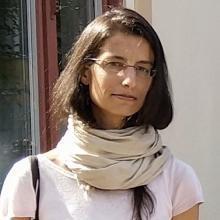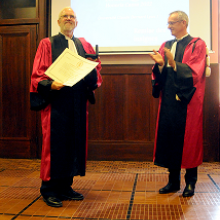Bioinformatics, Phylogeny and Evolutionary Genomics Group
Members
Maîtresse de conférences
UCBL
Tel: 04 72 44 84 87

Professeure des universités
UCBL
Tel: 33 04 26 23 44 76
Doctorante
UCBL
Enseignant-chercheur CPJ
UCBL

Directeur de recherche
CNRS
Tel: 33 04 72 44 62 97

Professeur d'université émérite
UCBL
Tel: 04 72 44 85 60
Ingénieur d'études CDD
CNRS

Directeur de recherche
CNRS
Tel: 33 04 72 43 11 67

Maîtresse de conférences
UCBL
Tel: 33 04 72 43 29 18
Doctorante
UCBL

Chargée de recherche
CNRS
Tel: 33 04 72 44 85 60

Directeur de recherche
CNRS
Tel: 04 72 44 84 87

Chargée de recherche
CNRS
Tel: 04 72 43 13 44

Directeur de recherche
CNRS

Maître de conférences
UCBL
Tel: 04 72 43 35 83

Chargée de recherche
CNRS
Tel: 04 72 44 81 42
Doctorant
CNRS

Directeur de recherche
CNRS
Tel: 33 04 72 44 62 96

Chargée de recherche
CNRS
Tel: 04 72 43 26 28
Doctorant
UCBL

Chercheur invité
UCBL
Our group focuses on two main axes: phylogenomics (i.e. the inference of evolutionary history based on genomics data) and evolutionary genomics (understanding the molecular and population processes that drive genome evolution). We see genomes both as a subject of research (how do genomes evolve, why are they structured the way they are?), but also as a main source of empirical knowledge about the macroevolutionary patterns (what do they tell us about the history of life on Earth?), or about the phenotypes and life-history strategies of organisms. Our works heavily rely on methodological developments (bioinformatics, modeling and statistical inference).
Evolution of genome architecture and expression
Genomes are the result of a long-term evolutionary process, shaped by multiple evolutionary forces. Some genomic features are adaptive (i.e. are beneficial for the fitness of organisms), others result from non-adaptive processes (random drift and biased gene conversion - BGC) or are caused by conflicts between multiple levels of selection (e.g. meiotic drive or the spread of selfish genetic elements). We explore different aspects of genome architecture (base composition landscapes, genome structure and size, impact of transposable elements, …) or functioning (gene expression, lncRNAs, epigenetic landscapes, …), and try to disentangle the relative contribution of adaptive and non-adaptive processes to their evolution. For this purpose, we consider both the molecular mechanisms (mutation, repair, recombination) and the population processes (selection, drift, BGC, …) that shape genetic variation.
Phylogenomics
We are interested in reconstructing the history of life on Earth. This research unfolds along several axes. First, we develop phylogenomic databases of aligned genetic sequences (e.g. BIBI, RiboDB or HOGENOM). Second, we conduct methodological research on how to accurately reconstruct deep phylogenies, infer divergence times, reconstruct ancestral genetic sequences, gene repertoires and life-history traits. This methodological work is translated into publicly available software programs (e.g. SeaView, PhyloBayes, Coevol). Finally, we apply these approaches to several important problems, among which: reconstructing the phylogeny of animals, of archaea, or the global tree of life; using phylogenies and ancestral gene repertoires to investigate the evolution of complex systems and the emergence of molecular and cellular functions in the three domains of life; reconstructing ancestral genetic sequences, a research activity that has industrial and biotechnological applications.
Teaching and outreach
We teach at University Lyon 1 (Master Bioinfo@Lyon), INSA, ENS Lyon, we organize bioinformatics internships. We regularly give conferences on evolution (tree of life, human evolution, genetic diversity, …).
Prospective students and postdocs are invited to apply, as we often welcome visitors for internships or research projects.
Keywords: Molecular evolution and Population Genomics; Phylogenomics; Computational Genomics; Comparative genomics; Bioinformatics; Statistical inference.
Publications
Display of 991 to 1020 publications on 1109 in total
WWW-query: an on-line retrieval system for biological sequence banks
Biochimie . 78 ( 5 ) : 364-369
Journal article
see the publicationOn-line tools for sequence retrieval and multivariate statistics in molecular biology
Computer Applications in the Biosciences . 12 : 63-69
Journal article
see the publicationSEAVIEW and PHYLO_WIN: two graphic tools for sequence alignment and molecular phylogeny
Bioinformatics . 12 ( 6 ) : 543-548
Journal article
see the publicationApplication of a modified disc diffusion technique to antimicrobial susceptibility testing of Vibrio anguillarum and Aeromonas salmonicida clinical isolates
Veterinary Microbiology . 51 : 137-149
Journal article
see the publicationDifferential growth of Listeria monocytogenes at 4 and 8°C: Consequences for the Shelf Life of Chilled Products
Journal of Food Protection . 59 ( 9 ) : 944-949
Journal article
see the publicationEvaluation of an expert system linked to a rapid antibiotic susceptibility testing system for the detection of β-lactam resistance phenotypes
Research in Microbiology . 147 ( 4 ) : 297-309
Journal article
see the publicationThe particular behaviour of Listeria monocytogenes under sub-optimal conditions
International Journal of Food Microbiology . 29 : 201-211
Journal article
see the publicationUse of mathematics and statistics in nutrition modelling
Annales de zootechnie . 45 ( Suppl1 ) : 143-152
Journal article
see the publicationCorrespondence discriminant analysis: a multivariate method for comparing classes of protein and nucleic acid sequences
Computer Applications in the Biosciences . 12 : 519-524
Journal article
see the publicationLALNVIEW: a graphical viewer for pairwise sequence alignments
Computer Applications in the Biosciences . 12 : 507-510
Journal article
see the publicationNRSub: a non-redundant database for Bacillus subtilis
Nucleic Acids Research . 24 : 41-45
Journal article
see the publicationEarly origin of foraminifera suggested by SSU rRNA gene sequences
Molecular Biology and Evolution . 13 ( 3 ) : 445-450
Journal article
see the publicationSequence heterogeneities among 16S ribosomal RNA sequences, and their effect on phylogenetic analyses at the species level.
Molecular Biology and Evolution . 13 ( 3 ) : 451-61
Journal article
see the publicationAn economic approach to the MIC.
Zentralblatt fur Bakteriologie : international journal of medical microbiology . 284 ( 1 ) : 67-74
Journal article
see the publicationIsolation and characterization of a cDNA encoding a chicken actin-like protein
Gene . 154 ( 2 ) : 205-209
Journal article
see the publicationInferring phylogenies from DNA sequences of unequal base compositions.
Proceedings of the National Academy of Sciences of the United States of America . 92 ( 24 ) : 11317-11321
Journal article
see the publicationRelationship between colonial surface and density on agar plate
The Journal of applied bacteriology . 79 ( 5 ) : 542-550
Journal article
see the publicationOlecranon bursitis due toPrototheca wickerhamii, an algal opportunistic pathogen
European Journal of Clinical Microbiology and Infectious Diseases . 14 ( 6 ) : 561-562
DOI: 10.1007/bf02113444
Journal article
see the publicationThe effect of incubation temperature and sodium chloride concentration on the growth kinetics of Vibrio anguillarum and Vibrio anguillarum -related organisms
The Journal of applied bacteriology . 78 ( 6 ) : 621-629
Journal article
see the publicationRoseobacter algicola sp. nov., a new marine bacterium isolated from the phycosphere of the toxin-producing dinoflagellate Prorocentrum lima.
International Journal of Systematic Bacteriology . 45 ( 2 ) : 290-6
Journal article
see the publicationA combined morphological and molecular approach to the phylogeny of asteroids (Asteroidea: Echinodermata)
Systematic Biology . 44 ( 2 ) : 190-208
Journal article
see the publicationStatistical analysis of vertebrate sequences reveals that long genes are scarce in GC-rich isochores
Journal of Molecular Evolution . 40 : 308-317
Journal article
see the publicationConvenient Model To Describe the Combined Effects of Temperature and pH on Microbial Growth
Applied and Environmental Microbiology . 61 : 610-616
Journal article
see the publicationSmall-subunit rRNA sequences and whole DNA relatedness concur for the reassignment of Pasteurella piscicida (Snieszko et al.) Janssen and Surgalla to the genus Photobacterium as Photobacterium damsela subsp. piscicida comb. nov.
International Journal of Systematic Bacteriology . 45 ( 1 ) : 139-44
Journal article
see the publicationOphiuroid phylogeny and higher taxonomy: morphological, molecular and palaeontological perspectives
Zoological Journal of the Linnean Society . 114 : 213-243
Journal article
see the publicationAccuracy of microbial growth predictions with square root and polynomial models
International Journal of Food Microbiology . 27 ( 2-3 ) : 139-146
Journal article
see the publicationRearrangement of CCND1 (BCL1/PRAD1) 3' untranslated region in mantle-cell lymphomas and t(11q13)-associated leukemias
Blood . 83 : 3689-3696
Journal article
see the publicationNRSub: a non-redundant data base for the Bacillus subtilis genome
Nucleic Acids Research . 22 ( 25 ) : 5525-5529
Journal article
see the publicationPhylogenetic position of foraminifera inferred from LSU rRNA gene sequences
Molecular Biology and Evolution . 11 ( 6 ) : 929-938
Journal article
see the publicationHOVERGEN: a database of homologous vertebrate genes
Nucleic Acids Research . 22 ( 12 ) : 2360-2365
Journal article
see the publication
